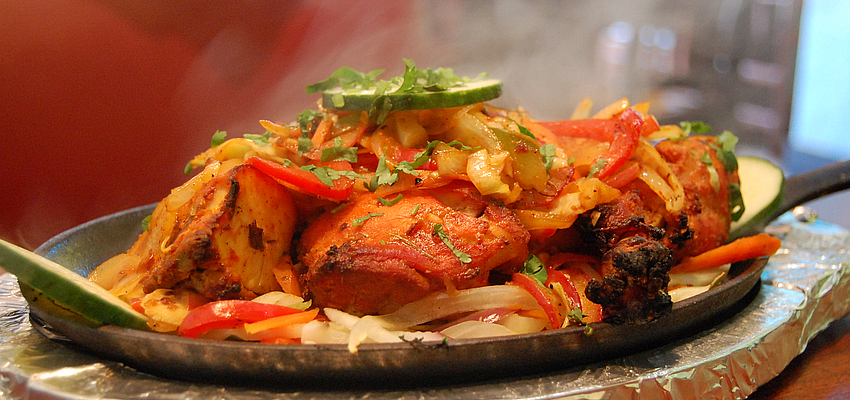


Indian cuisine deserves all our respect, as it is varied and delicious. After a year there, I only ate meat 3 times, but vegetarianism was anything but a sacrifice: India masters the art of spices, sauces, vegetables and especially rice and breads. Get ready to eat a lot, but especially very well!
No matter how long you spend there, I only know of a few travellers who have avoided mild food poisoning in India. Among the basic rules prevent it, it is obviously important to drink only bottled water (or water that has been boiled). Make sure the bottle is sealed before drinking it. Request "no ice" with all your drinks, including lassis... This means not eating ice cream either! Only eat fish if you are at the seaside, and refrain from it if you are inland. (This rule applies even if there's a lake nearby; go and look at the colour of the water and you'll understand why!).
Finally, avoid raw food: eat dishes that are cooked, marinated or boiled, but never get a salad. Contrary to what you might think, a little Indian restaurant that's very famous among locals is often safer (with a simple but nice menu including cooked vegetarian dishes) than a luxurious restaurant designed for tourists.
Although the safety rules for avoiding digestive problems apply everywhere, à la carte dishes are strongly influenced by the region you visit. Punjab specialities are more popular with Western cultures because this cuisine represents a familiar taste: dal (a lentil-based dish) is consumed by the whole country and originated here. Tandoori chicken, reddish-orange in colour, is also from here.
If you go to Kerala, specialities are quite similar to ones you'll find in Goa: fish, chapati and naan, vegetable curries, biryani, etc. The major difference is in the way it's served and the oil used: your dishes are often served on a banana leaf for a plate and all your starches will have a coconut taste! Coconut palms grow abundantly in the region, so all Keralan cuisine is prepared with coconut oil.
Generally, states in the South (like Tamil Nadu) have culinary traditions that are much spicier than those in the North. The solution for our novice palates: dairy products! Automatically dilute sauces and dips with yoghurt or eat raita (my favorite: cucumber) along with with your meals to soothe the heat.
You should know that ordering "non-spicy" in India doesn't mean you'll be served food without spices. Your dish will be spicy (it is culturally impossible to eat a neutral dish in India, as it is considered bland) but your dish will have fewer peppers than a standard plate.

Breads are varied and adapted to each region: naan (with its variations, butter naan, cheese naan and garlic naan), rotis (oven-baked pancakes), chapatis (pancakes cooked on a plate), dosas (plain or spicy potato crepes), papadums (between a tortilla and a crisp, often with cumin, for snacking), puris (moist fried pancakes whose best-known version in the West is the panipuri) or even uttapams (thick crepes close to the consistency of a pancake, but less spicy than dosa). They are served at breakfast or as a side dish...
It's impossible to leave India without having a thali (at the very least, an assortment of lentils in dhal, dairy products, rice, beans and peppers). Thali, biryani and curry are all offered in vegetarian or "non-veg" options. Expect some Mongolian or Persian influence for meat options like tandoori, but make no mistake about it: it's almost impossible to find pork (Muslim community) or beef (the cow is sacred) on menus in the whole country. The more common options will be based on chicken, and sometimes lamb.
Try the juices and lassis with no worries, but specify that they must be "pure" (not diluted with water) and free of ice. Finally, take advantage of papayas if they're in season: they'll be your best ally in fighting digestive issues!